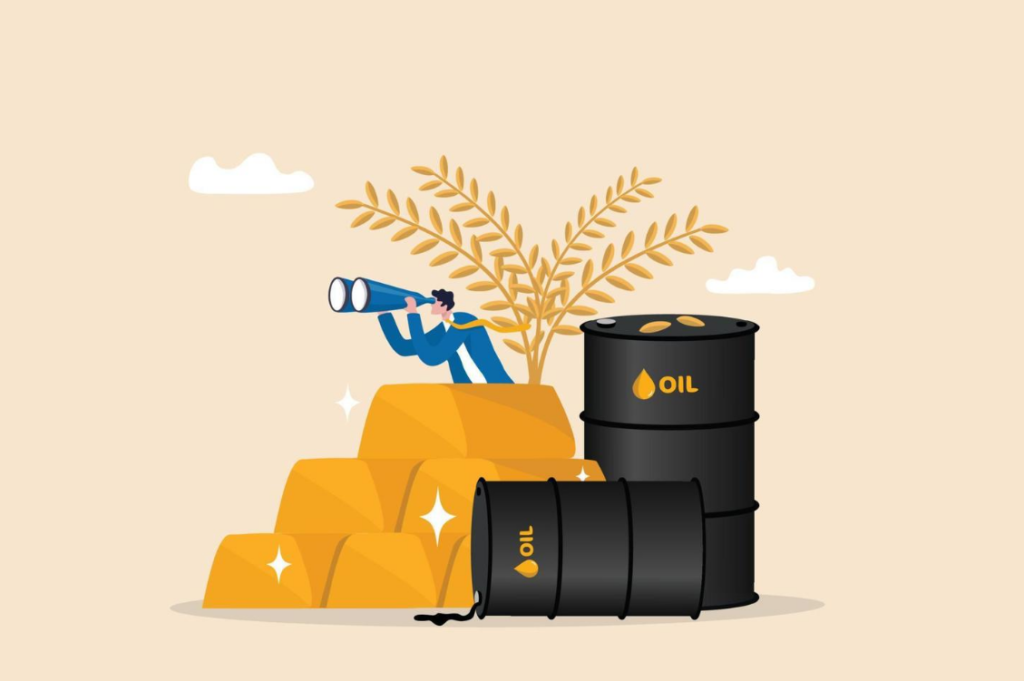Table of Contents
Introduction
Investing is one of the most powerful tools for building wealth, generating passive income, and securing your financial future. Whether you’re a novice investor or someone with years of experience, understanding the different types of investments available in the market is crucial to making informed decisions.
This article will delve into the top 10 types of investments, ranging from traditional options like stocks and bonds to modern alternatives such as cryptocurrencies and real estate crowdfunding. Each investment type has its own risks, rewards, and time horizons, and selecting the right mix for your portfolio can help you meet your financial goals.
1. Stocks
When people think of investments, stocks are often the first option that comes to mind. A stock represents ownership in a company, and by purchasing shares, you become a partial owner of that company. The primary goal is to profit from the company’s growth through either rising stock prices or dividends.

Why Invest in Stocks?
- High growth potential: Historically, stocks have offered some of the highest returns among all investment types.
- Dividends: Many companies pay dividends, which provide a regular income stream.
- Liquidity: Stocks are easily bought and sold on major exchanges, offering liquidity for investors.
Risks:
- Market volatility: Stock prices can fluctuate dramatically in the short term, driven by economic factors, company performance, or market sentiment.
- Company risk: If the company performs poorly or goes bankrupt, shareholders may lose their entire investment.
2. Bonds
Bonds are a type of debt investment where you lend money to a government, municipality, or corporation in exchange for periodic interest payments, plus the return of the bond’s face value at maturity. They are generally considered safer than stocks.

Why Invest in Bonds?
- Lower risk: Bonds are typically less volatile than stocks and are considered safer investments.
- Fixed income: Bonds provide regular, predictable interest payments, making them attractive for income-seeking investors.
- Diversification: Bonds can add diversification to a stock-heavy portfolio, reducing overall risk.
Risks:
- Interest rate risk: Bond prices typically fall when interest rates rise, which can lead to capital losses.
- Credit risk: There is a risk that the bond issuer may default on its debt obligations.
3. Real Estate
Real estate has long been considered one of the most stable and lucrative types of investments. Real estate investing involves buying physical properties, such as residential or commercial buildings, or investing in real estate-related securities, like Real Estate Investment Trusts (REITs).

Why Invest in Real Estate?
- Tangible asset: Real estate provides a physical, tangible asset, which can offer a sense of security.
- Appreciation potential: Properties can appreciate in value over time, especially in high-demand areas.
- Income generation: Renting out properties can generate a steady stream of passive income.
- Tax benefits: Real estate investors can benefit from various tax deductions, such as depreciation and interest deductions.
Risks:
- Illiquidity: Real estate is less liquid compared to stocks or bonds, making it harder to sell quickly.
- Market fluctuations: The real estate market can experience downturns, leading to losses in property value.
- Management costs: Owning and maintaining real estate properties can require significant time and money.
4. Mutual Funds
Mutual funds pool money from multiple investors to invest in a diversified portfolio of stocks, bonds, or other securities. Managed by professional fund managers, mutual funds are a popular choice for investors who prefer a hands-off approach to investing.

Why Invest in Mutual Funds?
- Diversification: Mutual funds invest in a wide range of assets, reducing the risk associated with individual securities.
- Professional management: Fund managers handle all investment decisions, making this a good option for passive investors.
- Accessibility: Mutual funds are available to all types of investors, with options suited to various risk tolerances and investment goals.
Risks:
- Fees: Mutual funds often come with management fees, which can eat into returns.
- Market risk: Even though they offer diversification, mutual funds are still subject to market fluctuations.
5. Exchange-Traded Funds (ETFs)
Similar to mutual funds, ETFs are a basket of securities that track an index, sector, commodity, or asset class. However, unlike mutual funds, ETFs are traded on exchanges like stocks, offering greater flexibility for investors.

Why Invest in ETFs?
- Low fees: ETFs often have lower expense ratios compared to mutual funds.
- Liquidity: ETFs can be bought and sold throughout the trading day, offering greater liquidity.
- Diversification: Like mutual funds, ETFs provide exposure to a broad range of assets in one investment.
Risks:
- Market volatility: ETFs can experience price fluctuations just like individual stocks.
- Tracking errors: Some ETFs may not perfectly track the performance of their underlying index or asset.
6. Cryptocurrencies
Cryptocurrencies, like Bitcoin and Ethereum, are digital or virtual currencies that use cryptography for security. Although relatively new compared to traditional investment types, cryptocurrencies have garnered significant attention due to their rapid growth and high returns.

Why Invest in Cryptocurrencies?
- High return potential: Cryptocurrencies have experienced explosive growth in recent years, with some coins offering significant returns.
- Decentralization: Cryptocurrencies operate on decentralized networks, meaning they are not controlled by governments or central banks.
- Portfolio diversification: Cryptocurrencies can add a new dimension of diversification to your portfolio.
Risks:
- Extreme volatility: Cryptocurrency prices are highly volatile and can experience massive swings in value over short periods.
- Regulatory uncertainty: Governments are still grappling with how to regulate cryptocurrencies, adding to the risks.
7. Commodities
Commodities are physical goods that are traded in global markets, such as gold, silver, oil, and agricultural products. Investors can gain exposure to commodities through direct purchases, futures contracts, or commodity ETFs.

Why Invest in Commodities?
- Inflation hedge: Commodities, especially precious metals like gold, are often used as a hedge against inflation.
- Diversification: Adding commodities to your portfolio can provide diversification and reduce risk.
- Global demand: The prices of commodities are driven by global supply and demand, which can offer profit opportunities.
Risks:
- Price volatility: Commodity prices can be highly volatile due to factors like weather, geopolitical events, or economic conditions.
- Storage and transportation costs: Physical commodities, such as gold or oil, can be expensive to store and transport.
8. Real Estate Investment Trusts (REITs)
REITs allow investors to pool their money to invest in income-generating real estate properties, such as office buildings, apartments, and shopping centers. REITs are publicly traded, making them a liquid way to invest in real estate without owning physical property.

Why Invest in REITs?
- Passive income: REITs pay regular dividends to investors from the income generated by the underlying properties.
- Diversification: REITs offer exposure to the real estate market without the need for direct property ownership.
- Liquidity: Since REITs are publicly traded, they can be easily bought and sold on the stock market.
Risks:
- Interest rate risk: Rising interest rates can negatively impact the performance of REITs, as borrowing costs for real estate companies increase.
- Market risk: Like stocks, REITs are subject to market volatility.
9. Peer-to-Peer Lending
Peer-to-peer lending (P2P) allows individuals to lend money directly to borrowers through online platforms, bypassing traditional banks. Lenders earn interest on the loans they provide, which can offer attractive returns compared to traditional savings accounts.

Why Invest in Peer-to-Peer Lending?
- High potential returns: P2P lending can offer higher interest rates compared to traditional savings accounts or bonds.
- Diversification: P2P lending allows investors to diversify their portfolios by lending small amounts to multiple borrowers.
- Access to alternative investments: P2P lending platforms make it easy for individuals to invest in a new asset class.
Risks:
- Default risk: Borrowers may default on their loans, resulting in a loss of capital.
- Liquidity risk: P2P loans are typically illiquid, meaning you cannot easily sell your investment if needed.
10. Certificates of Deposit (CDs)
Certificates of Deposit (CDs) are time deposits offered by banks, where investors agree to leave their money in the bank for a specified period in exchange for a fixed interest rate. CDs are considered one of the safest investments, as they are insured by the FDIC up to a certain limit.

Why Invest in CDs?
- Low risk: CDs offer a guaranteed return with virtually no risk of losing your principal, especially when purchased from an FDIC-insured bank.
- Fixed interest rate: CDs provide a fixed interest rate for the duration of the term, offering predictable returns.
- Short-term savings goal: CDs are ideal for investors with short- to medium-term savings goals who want a guaranteed return.
Risks:
- Low returns: While CDs are low risk, they also offer lower returns compared to other investment types.
- Early withdrawal penalties: Withdrawing money from a CD before it matures can result in penalties, reducing your overall returns.
Conclusion
Understanding the various types of investments is crucial to building a well-rounded and diversified portfolio that aligns with your financial goals and risk tolerance. From traditional investments like stocks, bonds, and real estate to modern alternatives such as cryptocurrencies and peer-to-peer lending, each asset class has its unique characteristics, risks, and rewards.
Diversifying your investments across different asset classes can help reduce risk while maximizing potential returns. As always, it’s essential to conduct thorough research and consult with a financial advisor before making any significant investment decisions.
By carefully considering these top 10 types of investments, you can take a step closer to achieving long-term financial security and growing your wealth over time.
FAQs
Q. What is the safest type of investment?
- The safest types of investments are typically government-backed securities like Treasury bonds or Certificates of Deposit (CDs). These investments are considered low risk but offer lower returns compared to stocks or other higher-risk investments.
Q. How can I start investing with little money?
- You can start investing with little money through low-cost ETFs, mutual funds, or peer-to-peer lending platforms. Many online brokers allow you to invest with as little as $50 or even less.
Q. Are cryptocurrencies a good investment?
- Cryptocurrencies are highly volatile and speculative investments. While they offer high return potential, they also carry significant risk. It’s essential to research thoroughly and only invest what you can afford to lose.
Q. What is the difference between stocks and bonds?
- Stocks represent ownership in a company and offer the potential for capital appreciation and dividends. Bonds are debt securities where you lend money to an entity in exchange for regular interest payments and the return of the principal at maturity. Stocks generally carry more risk but offer higher returns, while bonds are safer but with lower returns.
Q. How do I decide which investment is right for me?
- Your ideal investment depends on your financial goals, risk tolerance, and time horizon. If you’re looking for high returns and can tolerate risk, stocks or real estate may be suitable. If you prefer stable, low-risk investments, bonds or CDs might be better options. Always diversify your portfolio to balance risk and return.

